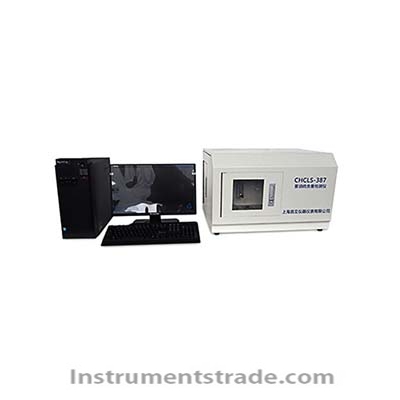- Model NumberCHCLS-387
- Brand NameSHCAYQYB
- Payment TermsT/T, paypal
Brief introduction:
CHCLS-387 microcomputer coulomb heavy oil sulfur tester is designed according to dynamic coulomb analysis principle. In the whole process of electrolytic cell titration, the sulfur content was calculated according to Faraday's law by measuring the electricity consumed in the electrolytic process. On the Windows Chinese operation platform, the mouse can directly control the pyrolysis furnace, sample injection system and agitator, and the pyrolysis furnace temperature adopts PID control technology. The instrument can analyze special samples by many methods, save data in real time, call historical data and so on.
Suitable for determination of sulfur content in crude oil, residual oil, coal residue, coke, mineral, rock, lubricating oil additive, petrochemical products and other materials.
Execution standard:
GB/T 387-1990 method for the determination of sulfur content in dark petroleum products (tube furnace method).
Standard test method for determination of sulfur content in additives (electric quantity method). GB/T 214
Features:
1. Integrated structure, easy operation
2. Automatic display of percentage content is accurate
3. Automatic tracking electrolysis can effectively prevent over titration
4. Adopt advanced technology to design the newly added function of the electrolytic cell.
5. The system adds a new filter device for the molten plate of the electrolytic cell, which reduces the pollution of the molten plate of the electrolytic cell and facilitates the replacement.
6. The electrolytic cell is made of quartz glass, and its bottom is wear-resistant to extend its service life.
Technical indicators:
1. Measurement range: 0.003 ~ 99.99%
2. Integral linearity: 0.1%
3, temperature control range: at room temperature to 1200 ℃
4. Electrolytic current: 350mA
5. Accuracy: in accordance with the provisions of GB/T214 GB/T0303 and GB/T 387SH/T 0303
6. Electrolytic cell volume: 850mL
7. Sampling range: 5mg ~ 130mg (accurate to 0.2mg)
8. Analysis time: about 5 minutes

